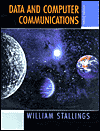|
cnet v2.0.10
home
|
cnet runs on a variety of UNIX and Linux platforms. It does not run on either Windows or the Apple Macintosh. The original and most up-to-date version of this documentation remains at www.csse.uwa.edu.au/cnet/.
Further information available from here:
- Getting started:
- An introduction to cnet (with several screenshots).
- The cnet simulation model.
- Topology files.
- Global, node, and link attributes.
- The event driven programming style.
- Walk through some introductory cnet protocols.
- Greater detail:
- cnet's layers and functions -
- cnet's many command line options.
- cnet's datatypes, event types, and error types.
- The CnetInt64 datatype.
- Tracing cnet's execution.
- cnet's Ethernet segments.
- Drawing data frames in cnet.
- cnet's layers and functions -
- cnet
Frequently Asked Questions.
- Downloading and installing cnet.
- Changelog.
Please appreciate that there are thousands of students worldwide using cnet. I am unable to respond to individual questions about cnet, unless they are from students enrolled in a course that I'm presenting. In particular, I will not answer homework or assignment questions. Please ask your professor or instructor.
![]()
Acknowledgments
The following people have generously offered suggestions, pieces of code, and acted as testers, as cnet has developed over the years. A big thanks to them all:Dr Greg Baur (University of Western Kentucky), Prof. Bruce Elenbogen (University Michigan-Dearborn), Mark Davies (University of Wellington, New Zealand), Prof. John Hine (University of Wellington, New Zealand), Dr Chris Johnson (The Australian National University), Dr David Laverell (Calvin College, Michigan), A/Prof. Phil MacKenzie (Boise State University, Idaho), Prof. Jeff Ondich (Carleton College, Minnesota), Dr Chris Pudney (The University of Western Australia), Dr Mike Robins (SMR Electronics Pty Ltd), Prof. James Wilkinson (College of Charleston, South Carolina), and my 1450 undergraduate students at The University of Western Australia and Dartmouth College who have always been able to find the last bug.
John O. Moen, from graphicmaps.com, has graciously permitted some images of countries (maps) to be distributed with cnet.
A number of people have provided bugfixes and ported cnet to other platforms. Please see the Changelog for details.

|
cnet has been selected by William Stallings to complement the material in his text Data and Computer Communications, 7th ed., published May 2004 by Prentice-Hall (© Copyright 2004, 864 pp., ISBN 0-13-100681-9). The 6th edition of this text was voted the winner of the 2000 award for long-term excellence in a Computer Science textbook, awarded by the Text and Academic Authors Association, Inc. |
If you can demonstrate that you are a member of academic staff somewhere (business card, FAX on University letterhead, or official Web page), I'll email some more detailed examples to you - ones that may typically be set for student projects.
If you decide to use cnet in the teaching of an undergraduate course, or need some more info on how to, please let me know. I'd like to keep a record of sites using cnet and the types of examples and projects being attempted. I'll also be able to keep you informed of updates.
References
- [McD91]
- A Network Specification Language and Execution Environment for Undergraduate Teaching, C.S. McDonald, Proc. of the ACM Computer Science Education Technical Symposium '91, San Antonio, Texas, Mar 1991, pp25-34.
- [McD93]
- Network Simulation Using User-level Context Switching, C.S. McDonald, Proc. of the Australian UNIX Users' Group Conference '93, Sydney, Sept 1993, pp1-10.
